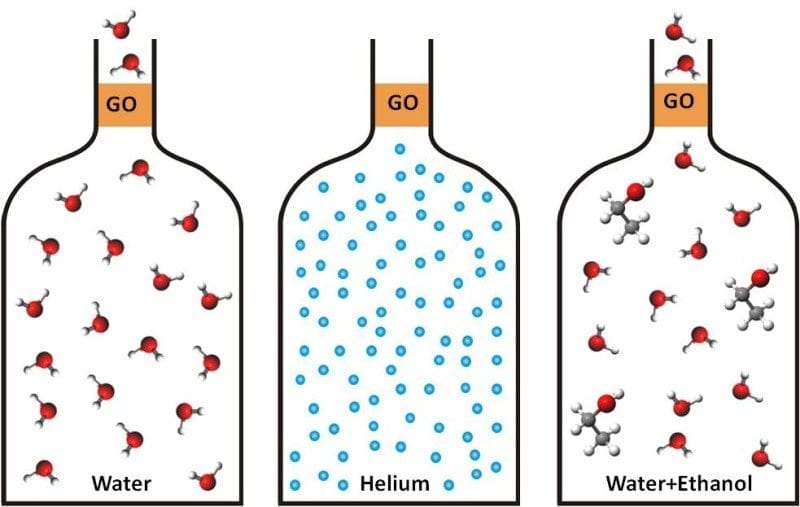
“If this state could persist at ambient temperature, it would profoundly transform our technological world”
Three physicists at the Université de Sherbrooke led an international team to first direct measurement of the critical magnetic field in cuprates, the most promising materials for superconductivity. This breakthrough resolves an enigma that has baffled researchers for 20 years and clears the way for major advances. The study is published in the prestigious journal Nature Communications.
A Dream Destination: Superconductivity at Ambient Temperature
When some materials are cooled to very low temperature, barely above absolute zero (-273 °C), they become superconductors, and their electrical and magnetic properties change radically. They acquire a nearly magical property: they carry electricity perfectly, without any energy loss.
The most promising superconducting materials are copper oxides, also called cuprates. They are, at present, the materials that become superconductors at the highest temperature, specifically -150 °C, which is halfway between absolute zero and ambient temperature.
So, for now, these materials must still be cooled down to extremely low temperatures before they become superconducting. “If this state could persist at ambient temperature, it would profoundly transform our technological world,” maintains Louis Taillefer, holder of the Canada Research Chair in Quantum Materials and the study’s senior investigator. The transmission of electricity around the world would be radically changed, for example. “This great dream will become possible when scientists understand how to increase the maximum value of the critical temperature by a factor of two or more.”
The team has just identified one of the main mechanisms limiting the critical temperature of cuprates, which opens a new direction in determining how to increase it.
A Million Times Stronger than the Earth’s Magnetic Field
In addition to their critical temperature, another fundamental property of superconductors is their critical magnetic field. What is its value in cuprates?
In order to measure the critical field of cuprates, the team investigated their capacity to conduct heat. A material’s heat conductivity turns out to be very sensitive to the onset of superconductivity. The very first direct measurement of this critical field in cuprates was made possible as the result of a novel approach developed by the group of researchers working on the physics of quantum materials at the Université de Sherbrooke.
“The key to our discovery,” says Nicolas Doiron-Leyraud, “was developing equipment at Sherbrooke that can make such measurements under very strong magnetic fields.” The team then traveled to specialized laboratories in Tallahassee, Florida, and Grenoble, France, where magnetic fields up to 1 million times the earth’s field are produced.
“Once there, we realized that it was the first time that anyone had made such an attempt, explains Gaël Grissonnanche, PhD student in physics and first author on the paper. The first measurements on the first day… and it worked!”
The Latest on: Superconductivity
[google_news title=”” keyword=”Superconductivity” num_posts=”10″ blurb_length=”0″ show_thumb=”left”]
via Google News
The Latest on: Superconductivity
- Hydride research pushes frontiers of practical, accessible superconductivityon April 29, 2024 at 9:02 am
Science is taking a step forward in the quest for superconductors that will not require ultra-high pressure to function, thanks to multinational research led by Xiaojia Chen at the University of ...
- Manchester scientists achieve milestone with one-dimensional superconductor discoveryon April 29, 2024 at 7:41 am
Scientists at The University of Manchester achieve robust superconductivity in high magnetic fields using a newly created one-dimensional (1D) system ...
- Superconductivity hunt gets boost from China's $220 million physics 'playground'on April 28, 2024 at 5:00 pm
From extreme cold to strong magnets and high pressures, the Synergetic Extreme Condition User Facility (SECUF) provides conditions for researching these potential wonder materials.
- Quantum Breakthrough: Researchers Unlock New Realms in 1D Superconductivityon April 27, 2024 at 7:14 am
Researchers at the University of Manchester have made a major advancement in superconductivity by successfully maintaining robust superconductivity under high magnetic fields in a new one-dimensional ...
- Enhanced superconductivity in monolayer FeSe films on SrTiO₃(001) via metallic δ-dopingon April 26, 2024 at 10:21 am
Interface engineering has been proven to be effective in discovering new quantum states, such as topological states, superconductivity, charge density waves, magnetism, etc., which require ...
- Enhanced superconductivity in monolayer FeSe films on SrTiO3(001) via metallic δ-dopingon April 25, 2024 at 5:00 pm
Fig. 1 The transport results of FeSe/δ-doped SrTiO 3 (001), in comparison with FeSe/SrTiO 3 (001).
- Manchester Scientists Find Novel One-Dimensional Superconductoron April 25, 2024 at 1:31 am
In a significant development in the field of superconductivity, researchers at The University of Manchester have successfully achieved robust superconductivity in high magnetic fields using a newly ...
- Judge dismisses superconductivity physicist’s lawsuit against universityon April 24, 2024 at 5:00 pm
Ranga Dias sued his university, in part, for allegedly conducting a biased investigation, which found he had committed extensive scientific misconduct.
- Exploring Unconventional Superconductivity in Synthetic and Natural Materialson April 24, 2024 at 8:12 am
Superconductivity is a notable discovery that has recently gained significant attention. Conventional superconductors, such as aluminum and niobium, are considered major participants in this domain. 1 ...
- Condensed matter physics: Novel one-dimensional superconductoron April 23, 2024 at 5:00 pm
In a significant development in the field of superconductivity, researchers have successfully achieved robust superconductivity in high magnetic fields using a newly created one-dimensional (1D) ...
via Bing News









